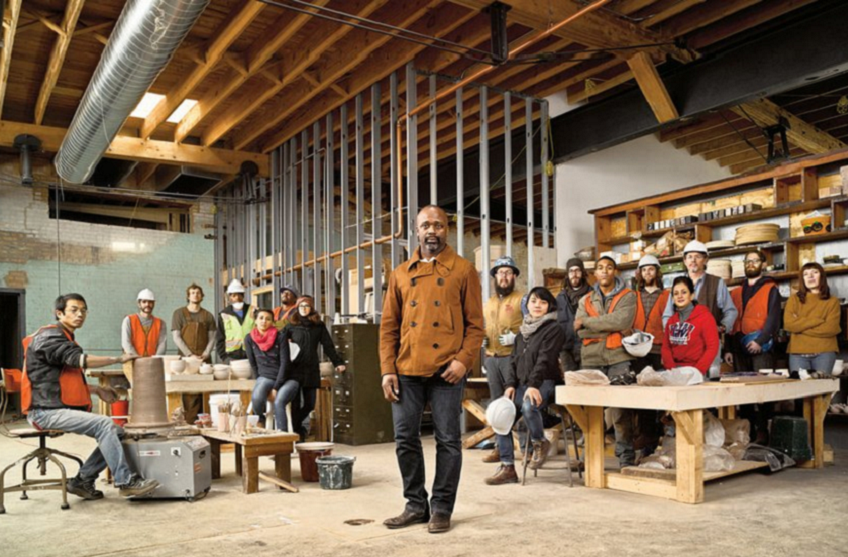It’s well know that culture and arts have been used to stimulate the economy. There are numerous creative industries and cultural industries that bring money in and move money around. They are both fields that have staying power, kind of like medicine.
People will always be interested in learning about culture and history and people will always have a need to be creative and make new things. That is why these are integral parts of society and economics.
Here are some of the industries in both of these fields that keep the economy afloat.
Galleries And Museums
Art galleries, like Park West Gallery in Detroit, Michigan, offer a home to fine art and a place where people can come in and view it. Often they run off of donations and sales, much like museums. They both offer culture and more.
Art galleries offer an outlet for artists, and when a great piece of art sells that money tends to stay local with local artists and spreads back around the community as they stock up on more supplies to create more amazing pieces of art.
On a related note, people living in rural communities need the same access as their urban counterparts, not only to clean water, jobs, housing and other basic standards of living, but art and culture, as well, note the backers of a growing movement called “rural creative placemaking.”
Led by the Rural Policy Research Institute (RUPRI) in the University of Iowa College of Public Health, researchers have been providing analysis and information on the challenges and opportunities facing rural America since the institute’s inception in 1990. Only recently, though, has the “creative” aspect come into play.
In creative placemaking, partners from public, private, nonprofit and community sectors shape the physical and social character of a neighborhood, city or region around arts and cultural activities to rejuvenate spaces, improve business viability and public safety, and bring people together.
“Chefs, growers, musicians, artists and other makers build an expressive, exciting place that adds to the quality of life of that place and the vibrancy of that quality of rural life,” said Charles Fluharty, RUPRI’s president and CEO.
That vibrant quality of life is essential in attracting the next generation to rural communities, Fluharty said, in order to sustain those places and the culture which has built and sustained them.
From a public health standpoint, 40 percent of health care costs stem from social determinants of health; conditions in which people are born, grow, live, work and age. Those circumstances are shaped by the distribution of money, power and resources at global, national and local levels, so the distribution of money and resources is significant, Fluharty said, citing massive funding flow inequities for rural areas.
The Washington Post notes that rural residents receive less than five percent of national philanthropic funding, and significantly less federal community and economic development support than urban places, therefore rural regions receive far less support than urban areas for community development. But the health of the nation’s cities is intertwined with the sustainability of rural areas – where 75 percent of our country’s natural resources exist, and need careful stewarding – so investing in rural communities has a significant benefit on a far broader scale, Fluharty said.
Key to that investment is attracting young families who will stay in a community if they can find a job, he added, and if they deem the place diverse, inclusive and dynamic, with opportunities for personal expression and community engagement.
TV, Movies and Gaming Industry
The television and movie industries make money around the world, traveling to different places to shoot, hiring actors, both big and small time. They make money that might mostly go back home with them, but they still spend a lot in the communities they shoot in, for hotel rooms, meals and more.
Gaming is an art form, and recently the gaming industry has spent some time in museums around the United States, showing people the art that goes into creating video games. These things also keep the economy stimulated because both children and adults love to play video games.
Performing Arts
The performing arts start as small as a local community theater that has volunteers acting on stage and makes their money strictly on tickets sales to keep this type of culture and art alive in their area, and is as large as the ballet.
The performing arts allows those performing to do their art and maybe even make a living at it, depending on their skill and location. It allows those viewing to learn a lesson about different cultures and different arts, and lets them travel into a different world off the pages of a book.
Tourism Industry
The tourism industry is a huge part of the cultural side of things and is one of the largest economic stimulators in any particular area. The tourism industry is what works to draw new people to their area, whether it’s just for a visit or forever.
This can include creating art and cultural festival, tournaments (like fishing for areas with rivers and lakes), and many other exciting things for people to do, and of course spend money on!
